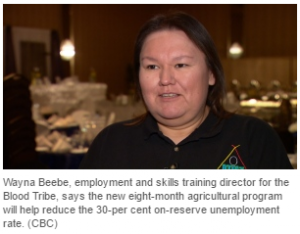The following are resources on research and initiatives that include a focus on Indigenous learners and higher (post-secondary) education, including an experiential activity that can be used as a teaching tool:
Ball, J. (2007). Indigenous learners online: The future isn’t what it used to be! Presented at 4th International Conference on Indigenous Education.
This publication is dated, but still relevant to my research interests in post-secondary education, online learning and Indigenous learners. The author (one of the researchers in UVic’s Early Childhood Development Intercultural Partnerships mentioned below) addresses the need for online learning technologies and innovative instructional design to support Indigenous post-secondary education.
KAIROS Canada. (n.d.). KAIROS Blanket Exercise.
The Blanket Exercise is a “teaching tool to share the historic and contemporary relationship between Indigenous and non-Indigenous peoples in Canada.” This site has a video and more information about incorporating this exercise into your teaching. The facilitated exercise (taught as a workshop) typically ends with a debrief via a talking circle.
University of Victoria. (n.d.). Early Childhood Development Intercultural Partnerships.
This University of Victoria (UVic)-associated program of community-university research related to early childhood development in Canada and globally provides links to their research projects and publications (including presentations and media resources), some of which are Indigenous focused. You’ll also find links to external resources with an Indigenous focus, e.g., child and youth care organizations, programs at the University of Victoria, etc.
University of Victoria School of Child and Youth Care. (n.d.). Indigenous Initiatives.
This webpage highlights courses, programs and specialization streams related to child and youth care practice in Indigenous contexts. Additional resources at the University of Victoria are also highlighted, including a link to all programs (undergraduate and graduate level) with Indigenous content, some of which are delivered via distance/online.
Walton, P., & Byrne, R. (2014). Developing an online survey to identify learning preferences of Indigenous online learners. Proceedings of MAC-EeL 2014: International Academic Conference on Education and E-learning.
This is an article about a survey identifying the learning preferences of Indigenous online learners. The authors, from Thomas Rivers University, presented their findings at the International Academic Conference on Education and E-learning in Prague (unfortunately, I’ve been unable to locate further information on this).

